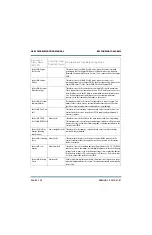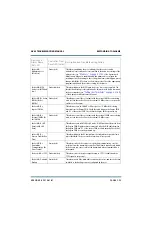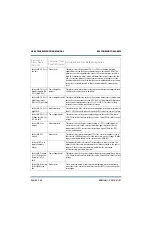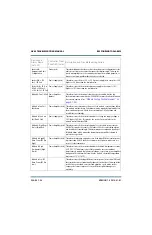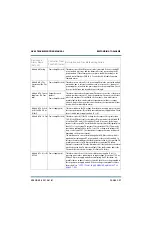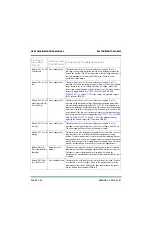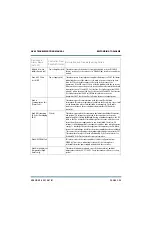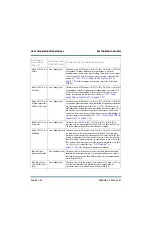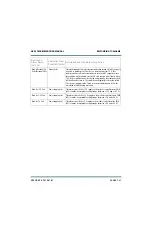
GV60 TROUBLESHOOTING MANUAL
RESPONDING TO ALARMS
VERSION 1.0 2018-01-01
PAGE 4.1.29
Module #: Switch
Inhibit (Switch Inh)
Power Amplifier (red) This alarm occurs if the module’s front panel switch is in the ‘DISABLE
(down)’ position. Set the switch to its ‘ENABLE (up)’ position to enable the
module.
Rack #: AC Phase
Loss A/B/C
Power Supply (red)
This alarm occurs if several power supply modules report a PS AC Fail alarm,
indicating that one of the phases of the main ac power source may have
been lost. Check the three amber LEDs in the bottom, rear of the
transmitter. If the LEDs are off, there is likely a problem with the ac service.
Measure the ac source voltage at the service entrance. Normally this should
measure between 175 and 265 V ac line-line [for 3-phase (nominal 208 V
ac) and 1-phase (nominal 240 V ac)] or between 303 and 459 V ac line-line
[for 3-phase (nominal 400 V ac)]. While this alarm is active, the
transmitter’s ALC function will not allow an increase in output power.
Rack #:
Communication Fail
(Comm Fail)
-
This alarm occurs if communication with the controller has been
interrupted. This alarm is typically only visible in the Events Log, since it will
not be transmitted when communication is interrupted. Check cable
connections between the associated module interface PWB and the
controller.
Rack #: Discharging
PA Volts (Discharging
PA V)
PS (red)
This alarm occurs when the transmitter has initiated a shutback sequence,
and residual PA voltage energy stored in the capacitors in the power
supplies and PAs is being discharged. During a shutback sequence, the RF
drive to the PAs is turned off immediately after the event, and this occurs
faster than the power supply modules can be inhibited. Therefore, PA
voltage is still being applied to the capacitors with no drive to discharge the
energy. To discharge the stored energy from the capacitors, the PA bias is
increased to a discharge level after the power supplies have been inhibited.
This causes the stored energy to be dissipated through dc current in the FET.
This alarm should only occur with a Residual PA Volts Present alarm. See
Residual PA Volts Present alarm for more information.
Rack #: EEPROM Fail
-
This alarm occurs if the rack is unable to load its configuration from
EEPROM. This is a non-critical fault, since all of the information is
retrievable from the power supply modules and the controller.
Rack #: High Ambient
Temperature (High
Amb Temp)
-
This alarm is indication only and occurs if the transmitter’s ambient
temperature exceeds 60°C (140°F). Check the intake air filters or cooling
system.
Device and
Alarm Name
(AUI, UI)
Controller Front
Panel LED (color)
Description and Troubleshooting Action
Summary of Contents for GV60
Page 2: ......
Page 4: ......
Page 8: ...GV60 TROUBLESHOOTING MANUAL PAGE 4 VIII VERSION 1 0 2018 01 01 ...
Page 102: ...GV60 TROUBLESHOOTING MANUAL PARTS LISTS PAGE 4 2 12 VERSION 1 0 2018 01 01 ...
Page 463: ...VERSION 1 0 2018 01 01 MD 17 Figure MD 17 NAPA31C Power Amplifier PWB Q1 ...
Page 475: ...GV60 TROUBLESHOOTING MANUAL LIST OF TERMS PAGE 4 6 2 VERSION 1 0 2018 01 01 ...
Page 476: ......








